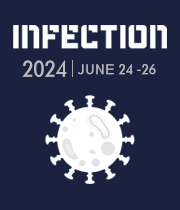Title : The problem of relapses of liver echinococcosis
Abstract:
Echinococcus granulosus - is one of the most common liver parasites in the Southern Urals. A serious complication of this infection is the development of recurrent cysts. Relapses can be metastatic and residual. A reliable method for determining the nature of the origin of recurrent cysts is not yet known today. The timing of relapse after primary surgery can be very different. Early dates are considered to be up to 3 years, late – after 3 or more years. Early relapses are of residual origin, while late ones are metastatic or reinvasive. This distribution is explained by the rapid growth of small (undetected) residual cysts after removal of the primary (dominant) cyst. The appearance of metastatic relapses is associated with imperfect surgical intervention. The cause of relapse of echinococcosis may also be damage to the integrity of the cyst wall.
We observed a rare case of cyst wall rupture by an unknown parasite animal. This incident occurred in a boy living in the Southern Urals. A cyst measuring 80x50 mm was discovered in the child's liver and he was operated on. After the operation, we studied this cyst. The cyst shell had a white chitins layer on the outside, characteristic of echinococcal larvae, lined with germinal cells on the inside. Brood capsules with protoscolexes were found in the fluid inside the cyst. On the inner surface of the cyst shell, many immobile rod-shaped brown formations of different sizes (1–3 mm in length and 0.1 mm in width) were identified. We studied one of them under a light microscope (magnification 10x10). The body was flattened, with a protrusion visible on its front part. On the ledge there is one pair of slightly curved claws 0.01 mm long and another pair 0.005 mm long. There is a round hole at the top of the protrusion. The body is divided by notches into wide and short segments resembling segments. On the surface of the body there are sparse hairs 0.01 mm long. Presumably this is Pentastomida, Cephalobaenida. It is known that Pentastomida larvae are capable of migration in the host organs, including the liver. When migrating, they mechanically damage the tissue; in this case, they made a hole in the wall of the hydatid cyst.



